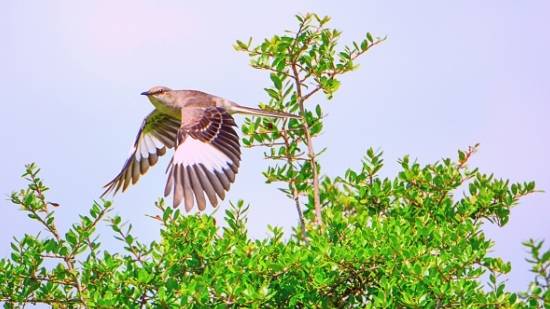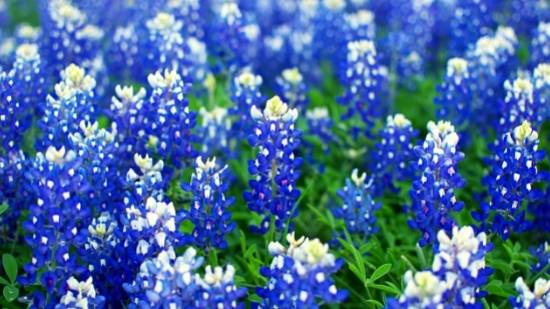State symbols are often adopted after a collaborative effort by citizens to have a significant item recognized for its importance to the state. States such as Texas, and many others began to adopt some of their own official state symbols several decades ago, and in some cases, over 100 years ago.
A state symbol can come in the form of state mammals, birds, flowers, insects, amphibians, nicknames, state seals, and much more.
Citizens, children, and educational institutions often research a particular symbol and make a request for a bill, tracking it all the way through the legislative process with the hope that it is enacted, and a new state symbol is announced for Texas.
Like all other states, there are many Texas state symbols. The Texas state bird and flower are the Mockingbird (Mimus polyglottos) and the Bluebonnet (Lupinus texensis).
What is the Texas State Bird?
The Texas Mockingbird was originally adopted as Texas’ official state bird in 1927, this was a result of the “Senate Concurrent Resolution No. 8, 40th Legislature”. The vocal abilities possessed by these mockingbirds ARE truly remarkable and undeniably a sight to behold, singing up to 200 different songs, which include the songs of other birds, insect and reptile noises, and even mechanical noises! Texas mockingbirds are found in abundance across the entire state, and nation, for that matter. The total population of mockingbirds is an estimated 45 million!

This Mockingbird is also very popular in other states. It is the state bird for Arkansas, Florida, Tennessee, and Mississippi, in addition to Texas. After the adoption of this bird, the Texas legislature said that the mockingbird “is found in all parts of the State, in winter and in summer, in the city and in the country, on the prairie and in the woods and hills … is a singer of distinctive type, a fighter for the protection of his home, falling, if need be, in its defense, like any true Texan”.
Texas Mockingbird Facts
Mockingbirds are beloved by many across the nation as they are intelligent, peaceful, and extremely skilled singers. Their long existence and interesting behavioral patterns have created an abundance of fun facts about them that you probably didn’t know about. Let’s dive in:
- There are 16 subspecies of mockingbirds in the world.
- Since the rosebush was introduced to the United States in the late 1700s, eastern mockingbird populations throughout the entire nation have been expanding.
- Their Latin name is “Mimus polyglottos” which translates to “many-tongued mimic”, which could not describe these birds any better.
- Not only can they mimic other birds and even music and machinery, but it has been recently discovered that they even mimic the noise of 12 different species of North American frogs and toads!
- In the 19th century, many people were poaching wild mockingbirds to use in the illegal pet trade. These birds were being sold for the equivalent of $1,300 today.
- A lot of these mockingbirds have adapted incredibly well to the humans constantly developed towns and cities and can be found in many Texan’s backyards!
- They lay more eggs than most, with the record being 27 eggs in a single season.
- The mockingbird is also the state bird for Arkansas, Florida, Mississippi, Tennessee, and Texas.
What is the Texas State Flower?
Texas designated the beautiful bluebonnet as the official state flower back in 1901. These flowers were named this way due to their blue coloration and sunbonnet-shaped petals. The somewhat ironic thing is that not all bluebonnets are actually blue. They come in many different colors such as purple, red, orange, and more. This is, however, a rare occurrence as the majority you will come across are typically blue.

The great thing about bluebonnets being adopted as Texas’ official state flower is that the representation of bluebonnets does not stop there. Texas has also used an official bluebonnet tartan, bluebonnet city, bluebonnet trail, bluebonnet flower song, and even a bluebonnet festival!
The North American prairie is the home of the bluebonnets, but unfortunately, it has been labeled as one of the most endangered ecosystems on the planet. They began forming over 20 million years ago, but there are some areas where up to 99% of the prairie has been destroyed in the last 100 to 150 years.
Quickfire bluebonnet facts:
- Bluebonnets tend to bloom in March and are in full bloom during April.
- The Lupinus Texensic and Lupinus Subcarnosis variations of the flower only ever grow in Texas!
- Texas was the first state to start growing flowers, including bluebonnets alongside highways.
- Bluebonnets require a lot of sun, which is why Texas is such a great home for them.
- It is a lot easier to grow on your own than many people are led to believe.
- Seeds start sprouting years after they have been planted.
- They are not actually always blue, there are many different color variations of bluebonnets.
Most states will have their symbols showcase a relevant story, that is indicative of the state and its history, and the Lone Star State puts its history and what it stands for across very well in its state bird and flower.


